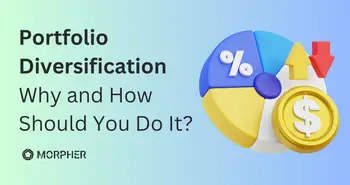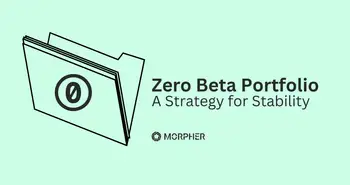Building Your First Investment Portfolio: A Beginner’s Guide to Starting in the Market

Investing in the stock market can be an intimidating endeavor, especially for beginners who are just starting out. However, with the right knowledge and a solid plan, building your first investment portfolio can be a rewarding experience. In this beginner's guide, we will walk you through the steps necessary to get started on your investment journey.
Understanding Investment Portfolios
What is an Investment Portfolio?
An investment portfolio is a collection of assets, such as stocks, bonds, mutual funds, or real estate, that an individual or entity holds as part of their investment strategy. The goal of an investment portfolio is to generate income or capital appreciation over time.
When constructing an investment portfolio, it is important to consider your financial goals, risk tolerance, and time horizon. These factors will help determine the mix of assets that should be included in your portfolio. For example, if you have a long-term investment horizon and are comfortable with taking on more risk, you may choose to include a higher allocation of stocks in your portfolio. On the other hand, if you have a shorter time horizon and are more risk-averse, you may opt for a larger allocation of bonds or other fixed-income securities.
Importance of Investment Portfolios
Investment portfolios play a crucial role in the financial well-being of individuals and entities. By diversifying your investments across different asset classes, sectors, and geographic regions, you can mitigate risk and potentially increase your returns.
Imagine putting all your eggs in one basket. If that basket falls, you lose everything. However, by spreading your investments across various assets, you minimize the impact of any single investment's failure.
Diversification is not just about spreading your investments across different asset classes, but also within each asset class. For example, within the stock portion of your portfolio, you may choose to invest in companies from different sectors such as technology, healthcare, and finance. This helps to further reduce the risk associated with any one particular sector experiencing a downturn.
Furthermore, geographic diversification is also important. By investing in companies or assets from different countries or regions, you can reduce the impact of any one country's economic or political events on your portfolio. This is particularly relevant in today's globalized world, where events in one part of the world can have ripple effects on financial markets worldwide.
In addition to diversification, investment portfolios allow individuals and entities to align their investments with their values and beliefs. This is known as socially responsible investing or impact investing. By investing in companies or funds that prioritize environmental, social, and governance (ESG) factors, individuals can support causes they care about while still seeking financial returns.
Another important aspect of investment portfolios is the ability to adjust and rebalance over time. As your financial goals or market conditions change, you may need to make adjustments to your portfolio. This could involve selling certain assets and buying others to maintain your desired asset allocation. Regularly reviewing and rebalancing your portfolio ensures that it remains aligned with your investment objectives and risk tolerance.
In conclusion, investment portfolios are essential tools for individuals and entities looking to grow their wealth over time. By diversifying across different asset classes, sectors, and geographic regions, investors can minimize risk and potentially increase their returns. Additionally, investment portfolios allow individuals to align their investments with their values through socially responsible investing. Regularly reviewing and rebalancing your portfolio ensures that it remains aligned with your financial goals and risk tolerance.
Steps to Building Your First Investment Portfolio
Setting Your Financial Goals
The first step in building your investment portfolio is to determine your financial goals. Are you saving for retirement, a down payment on a house, or your child's education? Understanding your goals will help you decide how much risk you're willing to take and how long you can invest your money.
Determining Your Risk Tolerance
Every investor has a different risk tolerance. Some are comfortable with high-risk investments that offer the potential for significant returns, while others prefer safer, more conservative options. Assess your risk tolerance to determine the right mix of investments for your portfolio.
Choosing the Right Investment Tools
Once you've established your goals and risk tolerance, it's time to choose the right investment tools. There are various options available, such as individual stocks, bonds, mutual funds, and exchange-traded funds (ETFs). Research each investment type and consider diversifying your portfolio to spread your risk.
For example, when I built my first investment portfolio, I decided to allocate a portion of my funds to a low-cost index fund that tracks a broad market index. This allowed me to diversify my investments across a wide range of stocks without having to analyze each company individually.
Diversification in Your Investment Portfolio
The Role of Diversification
Diversification is a key strategy in building a successful investment portfolio. By spreading your investments across different asset classes and sectors, you reduce the impact of any single investment on your overall portfolio performance.
Strategies for Effective Diversification
There are several ways to achieve diversification in your investment portfolio. One approach is to invest in different asset classes, such as stocks, bonds, and real estate. Another strategy is to diversify by sector, investing in companies across industries such as technology, healthcare, and consumer goods.
Personally, I follow a diversified approach by investing in a mix of stocks, bonds, and real estate investment trusts (REITs). This ensures that my portfolio isn't overly concentrated in one asset class.
Maintaining and Reviewing Your Investment Portfolio
Regular Portfolio Review
Once you've built your investment portfolio, it's essential to regularly review its performance and make any necessary adjustments. Market conditions and economic factors can impact the performance of your investments, so staying informed is crucial.
Every quarter, I review my portfolio to rebalance my asset allocation and ensure it aligns with my long-term goals. This involves selling some investments and buying others to maintain the desired mix of assets.
Adjusting Your Portfolio Over Time
As your financial goals evolve and your risk tolerance changes, you may need to make adjustments to your investment portfolio. Life events such as marriage, buying a home, or starting a family can impact your financial situation, requiring a different investment approach.
For example, when I got married, I reevaluated my investment strategy to account for shared financial goals and a different risk tolerance between my spouse and me.
Common Mistakes to Avoid When Building an Investment Portfolio
Overlooking Your Risk Tolerance
One of the biggest mistakes beginners make is ignoring their risk tolerance when building their investment portfolio. It's essential to choose investments that align with your comfort level with risk. Taking on too much risk can lead to unnecessary stress and potential losses.
Neglecting Diversification
Another common mistake is neglecting diversification. Failing to spread your investments across different assets and sectors can leave you vulnerable to market volatility. By diversifying, you protect yourself from the ups and downs of individual investments.
Not Reviewing Your Portfolio Regularly
Avoid the trap of setting and forgetting your investment portfolio. Regularly reviewing your holdings and making adjustments is critical to ensure your portfolio stays aligned with your goals and risk tolerance.
Remember, building an investment portfolio is a marathon, not a sprint. Stay disciplined, diversify wisely, and adjust as needed to achieve your financial goals.
Frequently Asked Questions (FAQ)
Q: Can I start investing with a small amount of money?
A: Absolutely! Many online brokerages offer low-cost investment options, allowing you to start with as little as $100. Starting small and consistently adding to your investments over time can yield substantial results.
Q: How often should I review my investment portfolio?
A: It's recommended to review your investment portfolio at least once a quarter. However, keep in mind that major life changes or significant market events may warrant a more frequent review.
Q: Should I seek professional financial advice?
A: While it's not necessary for everyone, consulting with a financial advisor can provide valuable guidance on building and managing your investment portfolio. They can help you navigate complex investment options and tailor a strategy to your specific needs.
With this beginner's guide, you now have the tools to confidently build your first investment portfolio. Remember to understand your goals, diversify wisely, and review and adjust your portfolio regularly. Investing in the market can be a fruitful journey, but it requires patience, discipline, and a solid plan. Best of luck on your investment journey!
Ready to embark on your investment journey with a platform that aligns with the innovative strategies discussed in this guide? Look no further than Morpher, the revolutionary trading platform that leverages blockchain technology for a seamless investing experience. With Morpher, you can enjoy zero fees, infinite liquidity, and the flexibility of fractional investing and short selling. Take control of your investments with the safety of the Morpher Wallet, and if you're feeling bold, explore up to 10x leverage to amplify your trades. Experience a unique trading environment with Virtual Futures and a variety of asset classes. Sign Up and Get Your Free Sign Up Bonus today, and transform the way you trade with Morpher.

Disclaimer: All investments involve risk, and the past performance of a security, industry, sector, market, financial product, trading strategy, or individual’s trading does not guarantee future results or returns. Investors are fully responsible for any investment decisions they make. Such decisions should be based solely on an evaluation of their financial circumstances, investment objectives, risk tolerance, and liquidity needs. This post does not constitute investment advice.

Painless trading for everyone
Hundreds of markets all in one place - Apple, Bitcoin, Gold, Watches, NFTs, Sneakers and so much more.

Painless trading for everyone
Hundreds of markets all in one place - Apple, Bitcoin, Gold, Watches, NFTs, Sneakers and so much more.









